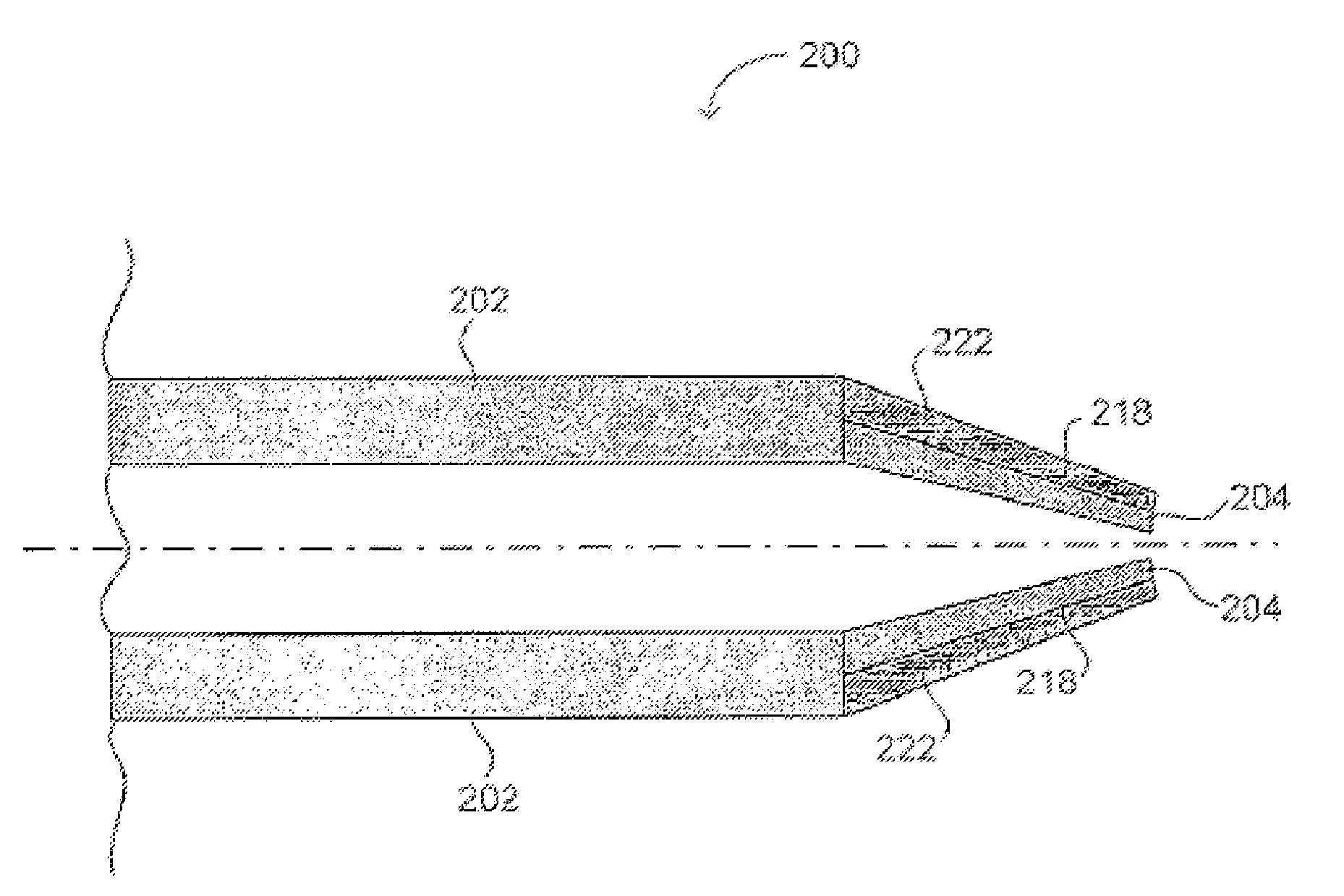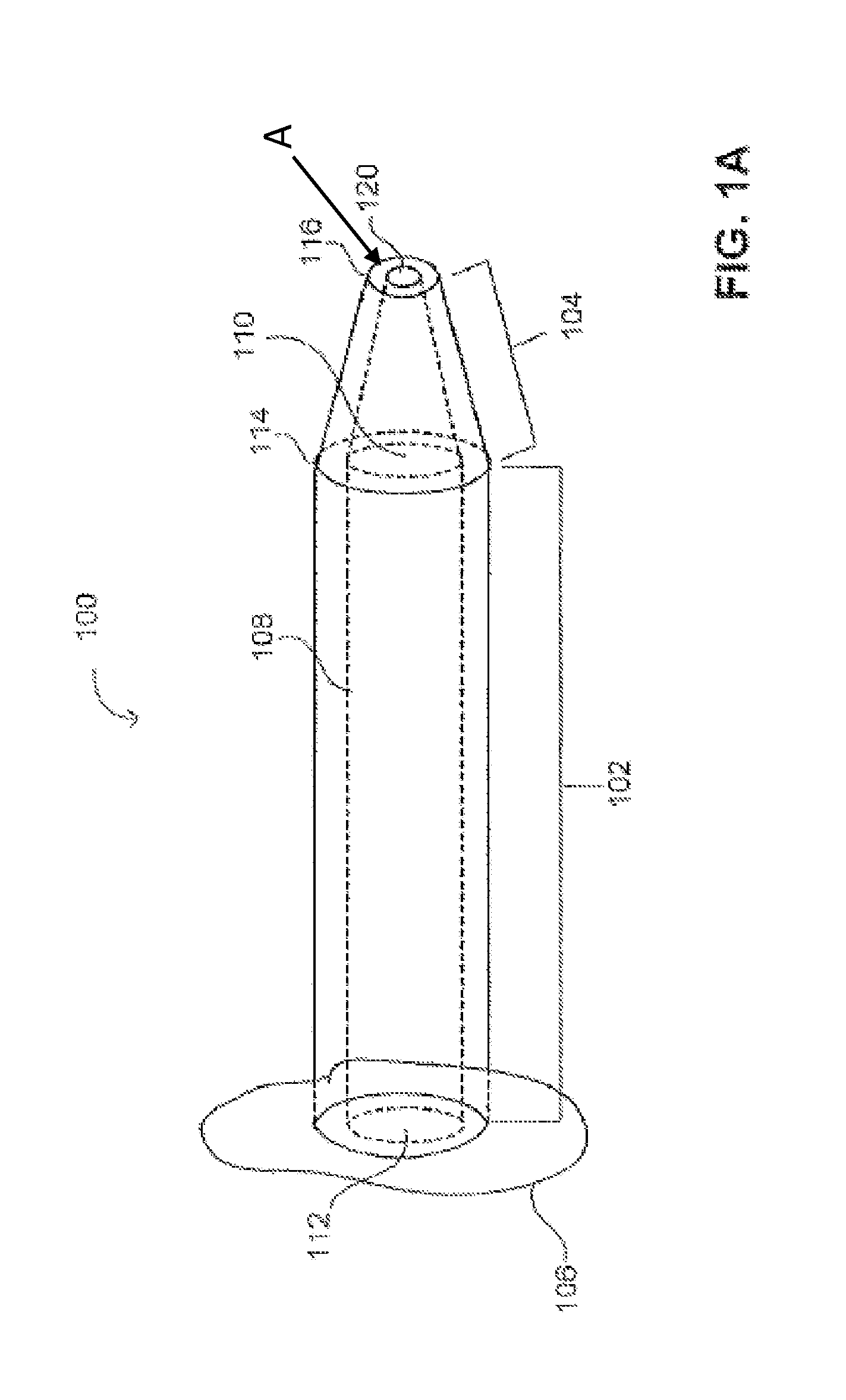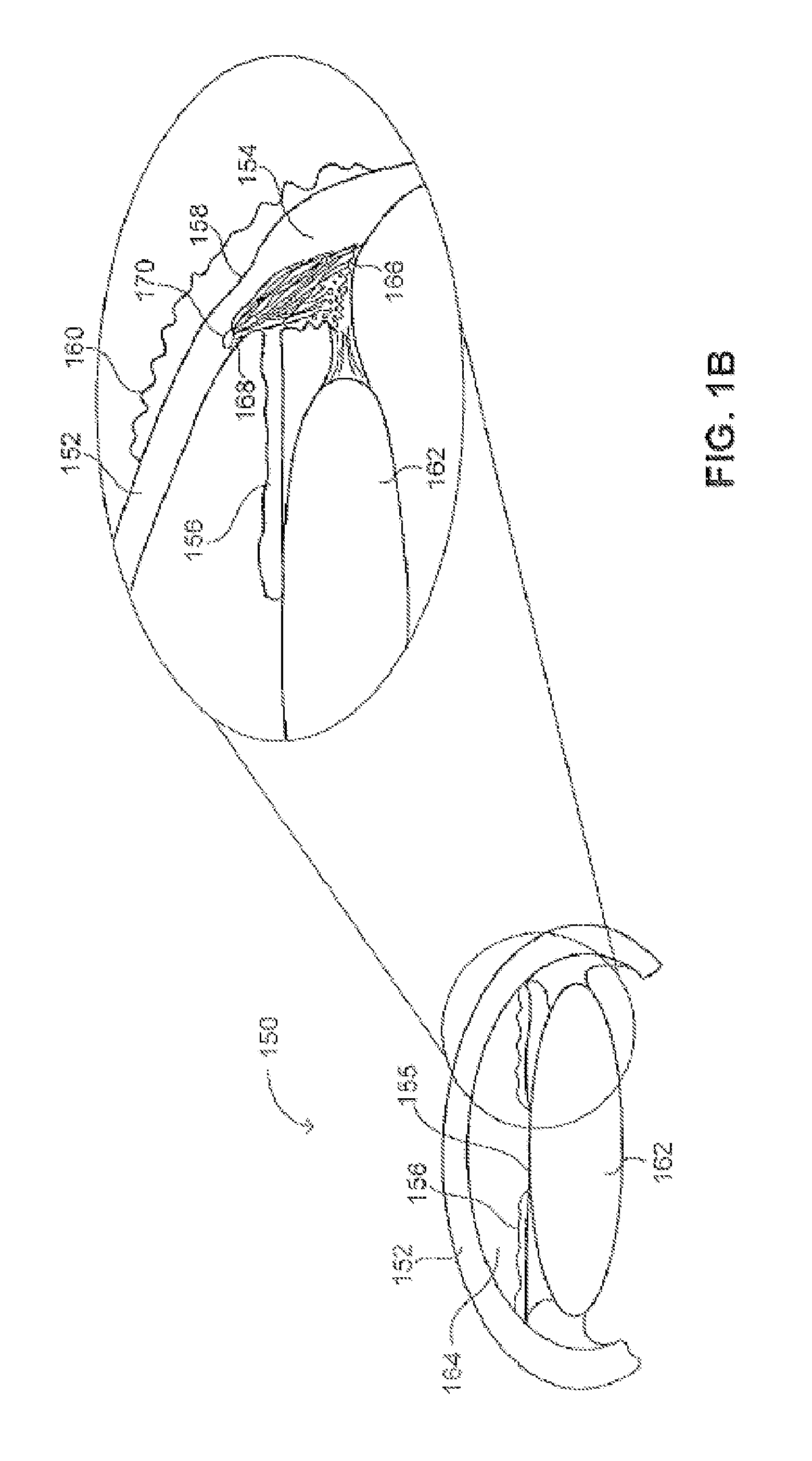Ocular implant with intraocular fluid pressure regulation
- Summary
- Abstract
- Description
- Claims
- Application Information
AI Technical Summary
Benefits of technology
Problems solved by technology
Method used
Image
Examples
example 1
Construction of Biodegradable Ring 400 and Loading with an Active Material
Materials:
[0163]1. Hydroxypropyl cellulose (HPC) with different molecular weights (different viscosity) supplied by Ashland (Hercules Incorporation-Aqualon Devision)-Biodegradable film forming Polymer
[0164]Forth beneath are different grades of HPC which were used in the present study;
[0165]HPC LF-
[0166]HPC GF-
[0167]HPC MF-
HPC PharmaConcentration inGradeWater by Weight %Viscosity Type25Molecular WeightHPC LF-75-15095,000HPC GF-150-400370,000HPC MF4000-6500850,000
[0168]The data was taken from Hercules Incorporation-Klucel brochure (Physical and Chemical Properties)
[0169]2. Polyvinyl alcohol (PVA)—biodegradable film forming polymer
[0170]3. Tannic acid—cross-linker
[0171]4. Polysorbate 80 (Tween 80)—surface active agent—solubilizer
Methods:
[0172]In an initial experiment the solubility of the above polymers in phosphate buffer solution was tested. For this reason films of these polymers were prepared in water. The fi...
example 2
[0173]In further experiments in order to extend the duration of dissolution time, in other words to hinder the degradation of the ring, cross-linking of the above polymer took place. The cross linking was carried out by an in-situ reaction between the polymer and tannic acid which was used as a cross-linker. For this purpose film of different polymers including the cross-linker was prepared by dissolving the polymer in an organic solvent such as either ethanol or THF (tetrahydrofuran) together with the predetermined amount of tannic acid. The resulting solution was left to be dried for at least 24 hours to attained a dry film of the polymer and the cross-linker. The cross-linking reaction was carried out in-situ where the film was exposed to an aqueous solution. The cross-linking was used to hinder the dissolution of the polymer films.
[0174]Pieces of resulting films 1 cm×1 cm were soaked in PBS at 37° C. and the integrity and dissolution of the film was followed by observation. The ...
example 3
[0176]In a further experiment the release profile of flurbiprofen (FBP) which is an NSAID (non-steroidal anti-inflammatory drugs) from cross-linked films in PBS at 37° C. was measured. For this purpose films based on HPC LF with different contents of the cross-linker were prepared.
[0177]The following is the composition of the films
[0178]1. HPC LF—film forming polymer
[0179]2. Polysorbate 80 surfactant / solubilizer
[0180]3. Tannic acid—Cross-linker
[0181]4. FBP—active material
[0182]Pieces of resulting films 1 cm×1 cm containing 5 mg FBP were soaked in PBS at 37° C. and release profile of the films was determined by measuring the dissolution of FBP during different period of times in PBS using an UV spectrophotometer and an appropriate calibration curve.
[0183]FIG. 5 which illustrates the accumulative release profile of flurbiprofen (FBP) from films cross-linked by different cross-linker (tannic acid) concentrations. FIG. 5 demonstrates the release rate of the active material in PBS, expre...
PUM
 Login to View More
Login to View More Abstract
Description
Claims
Application Information
 Login to View More
Login to View More - R&D
- Intellectual Property
- Life Sciences
- Materials
- Tech Scout
- Unparalleled Data Quality
- Higher Quality Content
- 60% Fewer Hallucinations
Browse by: Latest US Patents, China's latest patents, Technical Efficacy Thesaurus, Application Domain, Technology Topic, Popular Technical Reports.
© 2025 PatSnap. All rights reserved.Legal|Privacy policy|Modern Slavery Act Transparency Statement|Sitemap|About US| Contact US: help@patsnap.com



